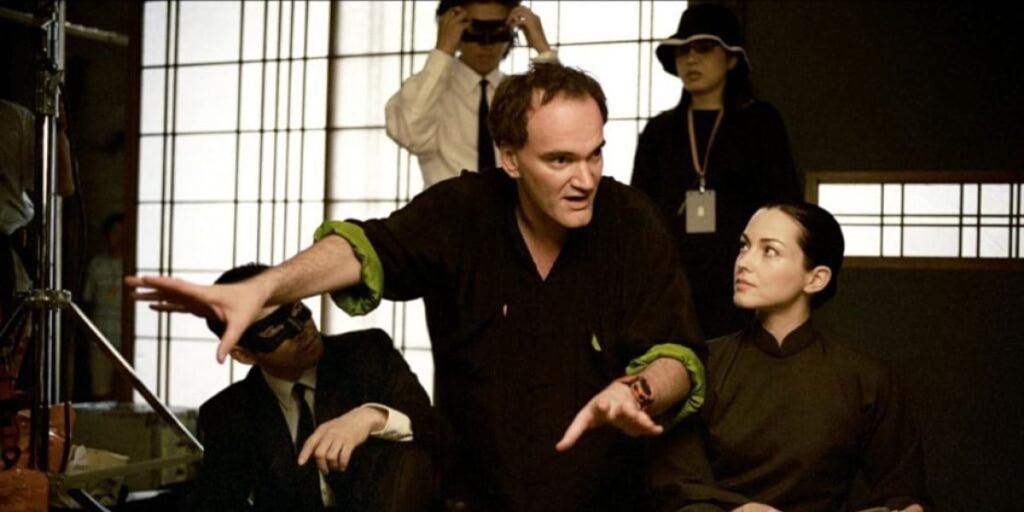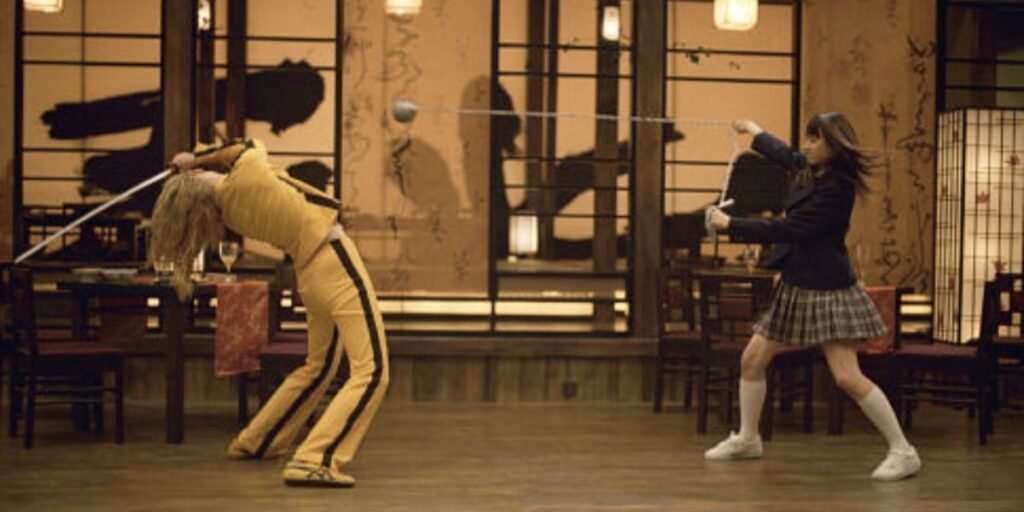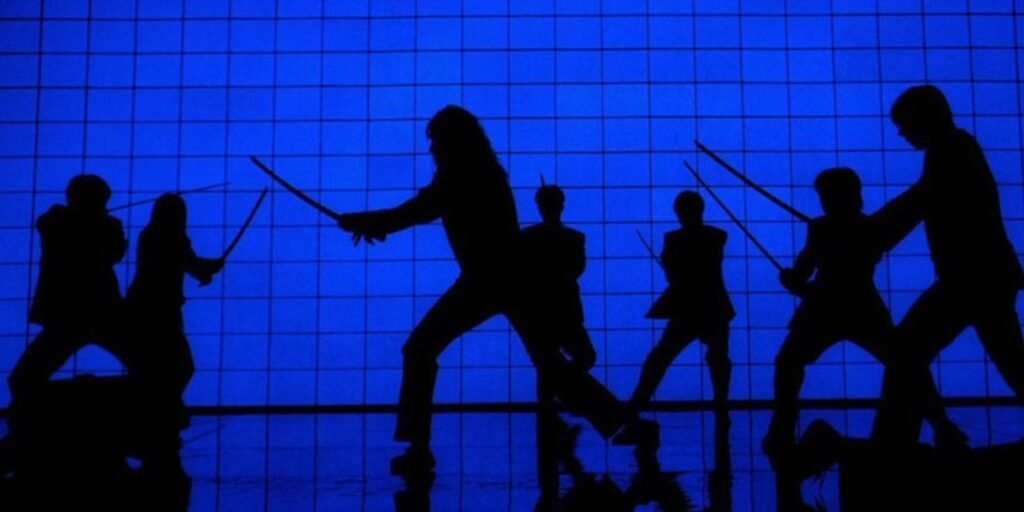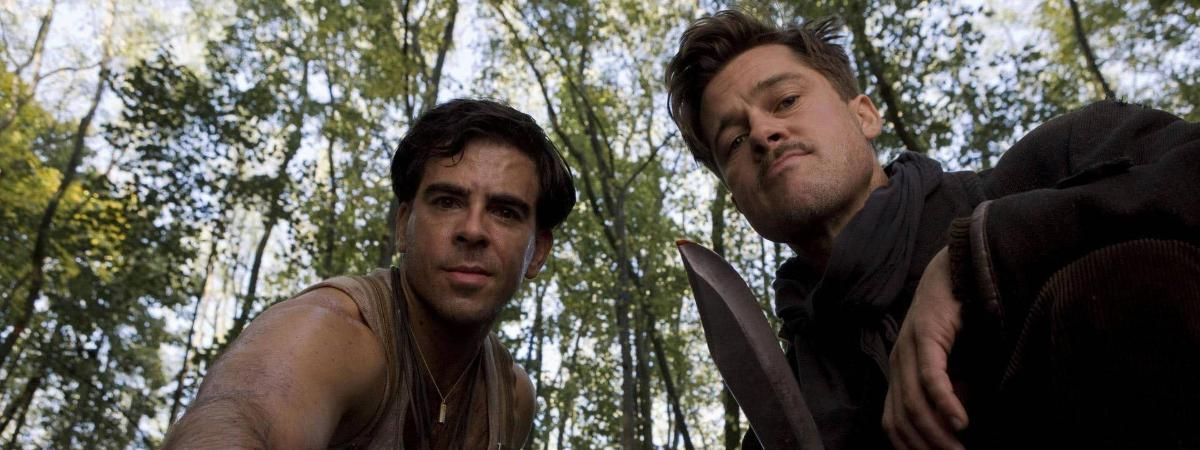We examine the artistic components that distinguish “Kill Bill” as a work of high-octane entertainment and a subject of cinematic study. The visual artistry of “Kill Bill” is evident in its use of color and costume design, which not only serves the narrative but also pays homage to various film genres and classics. The Bride’s iconic yellow tracksuit alludes directly to the legacy of Bruce Lee, while eclectic settings and a diverse soundtrack contribute to the film’s distinctive aesthetic.
Storytelling in “Kill Bill” is complex, utilizing non-linear narratives and character developments that span across cultures and periods. This weaves a tapestry that challenges traditional storytelling methods. We explore how the narrative of the iconic Tarantino movie constructs and character arcs serve the overall artistic vision of the “Kill Bill” saga.

Origins and influences
“Kill Bill” is a cinematic tapestry woven with diverse influences from martial arts films to spaghetti westerns. Our exploration here focuses on its ties to martial arts cinema and Quentin Tarantino’s personal inspirational sources.
Homage to martial arts cinema
In “Kill Bill”, our heroine’s journey is punctuated by elaborate fight scenes reminiscent of the classic martial arts films of the ’60s and ’70s. These scenes pay tribute to the genre with:
- Choreography: The precision and style are inspired by legendary fighters like Bruce Lee and films such as Fist of Fury.
- Cinematography: Split screens and zooms are techniques lifted directly from this era’s visual vocabulary.

What are the key visual influences in “Kill Bill”?
“Kill Bill” draws heavily from a rich tapestry of cinematic traditions, including Japanese samurai films, Hong Kong martial arts cinema, Italian spaghetti westerns, and American grindhouse films. Notably, the character of The Bride in her yellow tracksuit pays homage to Bruce Lee in “Game of Death,” and the film’s animated sequences are influenced by anime. Tarantino’s eclectic influences contribute to the film’s distinctive visual style, which blends Eastern and Western aesthetics.
What makes the fight scenes in “Kill Bill” stand out?
The fight scenes in “Kill Bill” are notable for their choreography, scope, and stylistic influences. Tarantino collaborated with legendary martial arts choreographer Woo-Ping Yuen to craft elaborate, balletic fight sequences that pay tribute to classic kung fu and samurai films. The showdown between The Bride and the Crazy 88s is particularly memorable for its scale, creativity, and the way it seamlessly blends humor and horror, showcasing Tarantino’s flair for spectacle.
Quentin Tarantino’s inspirations
Quentin, known for his incredible direction and vision for “Kill Bill”, is heavily influenced by his love for cinema. Specific inspirations include:
- Filmmakers: Sergio Leone’s Westerns and the kinetic energy of anime by directors like Satoshi Kon.
- Narrative Elements: Tarantino pulls from the ’70s exploitation films and French New Wave to craft a revenge story that is both familiar and fresh.
Critical analysis
In analyzing “Kill Bill,” we focus on the narrative structure, cinematography, use of music, and character development, each vital to the film’s success and unique style.
Narrative structure
“Kill Bill” is non-linear, a storytelling choice that reveals the plot through a series of flashbacks and chapters. The narrative begins with The Bride’s quest for vengeance, using chapter titles to orient us within the timeline of events. This structure engages us by making us piece together the story, imparting a sense of discovery as scenes unfold.

Cinematography
Quentin Tarantino and cinematographer Robert Richardson employed a variety of techniques to give “Kill Bill” a distinct visual style. Long takes and overhead shots are iconic, especially during fight scenes, while split screens are used for dramatic effect. The color palette switches from vibrant to monochrome, symbolizing The Bride’s transition from a life of violence to one of peace.
You might like our top thriller movies of all time
How does Quentin Tarantino blend violence and art in “Kill Bill”?
Tarantino masterfully intertwines graphic violence with artistic flair in “Kill Bill”, creating a visually stunning experience that transcends traditional action films. He employs various cinematic techniques, including choreographed fight scenes reminiscent of classic martial arts movies, stylized blood spatter, and dramatic use of color and black-and-white sequences. This blend highlights Tarantino’s ability to transform violence into a form of visual poetry, contributing to the film’s unique aesthetic.
Use of music
The eclectic soundtrack is integral to “Kill Bill,” often driving scenes with minimal dialogue. Specific tracks, like “Battle Without Honor or Humanity” during the Tokyo arrival scene, become synonymous with the film. Music selection ranges from Western to Japanese influences, providing emotional cues and emphasizing the fusion of cultures present in the storyline.
How does “Kill Bill” use music to enhance its artistic vision?
Music is integral to the artistic vision of “Kill Bill”, with Tarantino handpicking songs that complement the film’s eclectic style and enhance its emotional impact. The soundtrack features a diverse selection of music, from the haunting whistle theme of “Twisted Nerve” to the energetic “Battle Without Honor or Humanity” by Tomoyasu Hotei. These choices not only underscore the film’s dramatic moments but also contribute to its global and timeless feel, further blurring the lines between different genres and cultures.
Character Development
The Bride, played by Uma Thurman, undergoes significant change throughout the film. Initially driven by raw vengeance, flashback sequences gradually reveal her complex past and motivations. Supporting characters like O-Ren Ishii and Elle Driver have depth, unveiled through dialogue and interactions with The Bride, contributing to a rich tapestry of character arcs that intertwine with the main narrative.








